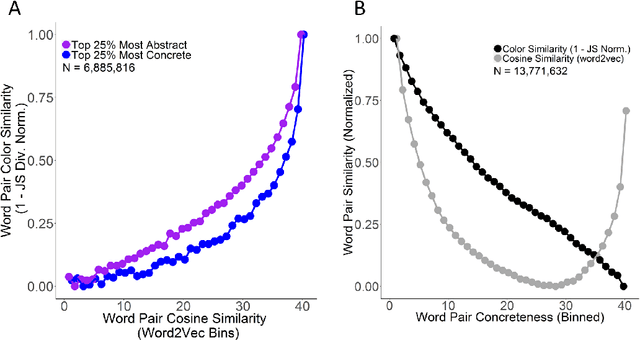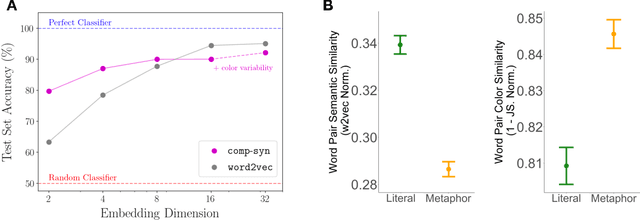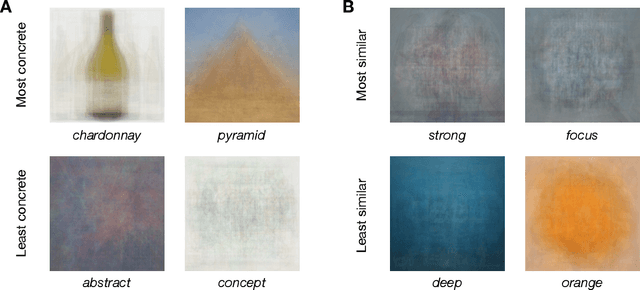Tasker Hull
Divergences in Color Perception between Deep Neural Networks and Humans
Sep 11, 2023Abstract:Deep neural networks (DNNs) are increasingly proposed as models of human vision, bolstered by their impressive performance on image classification and object recognition tasks. Yet, the extent to which DNNs capture fundamental aspects of human vision such as color perception remains unclear. Here, we develop novel experiments for evaluating the perceptual coherence of color embeddings in DNNs, and we assess how well these algorithms predict human color similarity judgments collected via an online survey. We find that state-of-the-art DNN architectures $-$ including convolutional neural networks and vision transformers $-$ provide color similarity judgments that strikingly diverge from human color judgments of (i) images with controlled color properties, (ii) images generated from online searches, and (iii) real-world images from the canonical CIFAR-10 dataset. We compare DNN performance against an interpretable and cognitively plausible model of color perception based on wavelet decomposition, inspired by foundational theories in computational neuroscience. While one deep learning model $-$ a convolutional DNN trained on a style transfer task $-$ captures some aspects of human color perception, our wavelet algorithm provides more coherent color embeddings that better predict human color judgments compared to all DNNs we examine. These results hold when altering the high-level visual task used to train similar DNN architectures (e.g., image classification versus image segmentation), as well as when examining the color embeddings of different layers in a given DNN architecture. These findings break new ground in the effort to analyze the perceptual representations of machine learning algorithms and to improve their ability to serve as cognitively plausible models of human vision. Implications for machine learning, human perception, and embodied cognition are discussed.
comp-syn: Perceptually Grounded Word Embeddings with Color
Oct 19, 2020



Abstract:Popular approaches to natural language processing create word embeddings based on textual co-occurrence patterns, but often ignore embodied, sensory aspects of language. Here, we introduce the Python package comp-syn, which provides grounded word embeddings based on the perceptually uniform color distributions of Google Image search results. We demonstrate that comp-syn significantly enriches models of distributional semantics. In particular, we show that (1) comp-syn predicts human judgments of word concreteness with greater accuracy and in a more interpretable fashion than word2vec using low-dimensional word-color embeddings, and (2) comp-syn performs comparably to word2vec on a metaphorical vs. literal word-pair classification task. comp-syn is open-source on PyPi and is compatible with mainstream machine-learning Python packages. Our package release includes word-color embeddings for over 40,000 English words, each associated with crowd-sourced word concreteness judgments.
 Add to Chrome
Add to Chrome Add to Firefox
Add to Firefox Add to Edge
Add to Edge